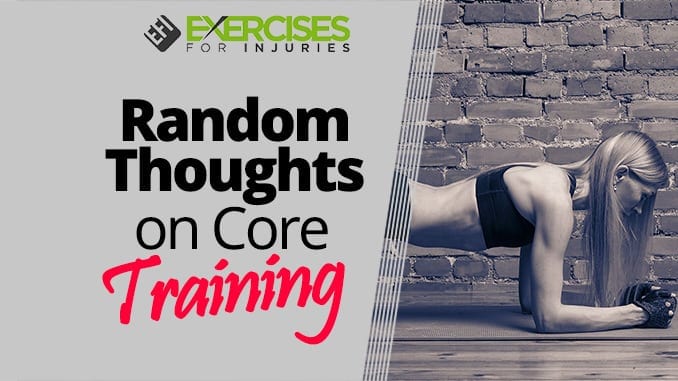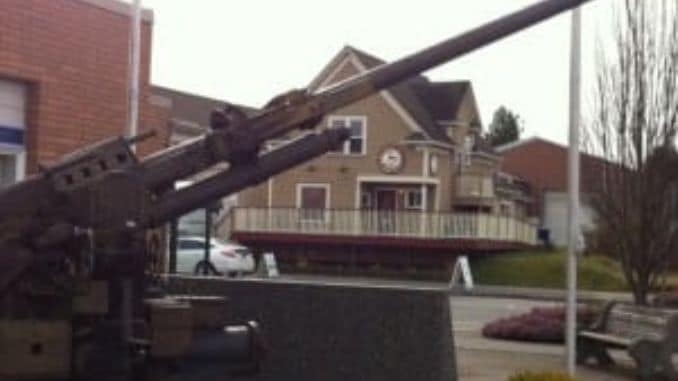
3 States, 2 Countries, and a Province
This article has gone a few miles. It did not take me long to write, but I worked on it for a few thousand miles. These are my random thoughts on core training.
A Favorite Spot of Mine
I started it in Blaine, Washington, the USA, about 30 minutes from my house, in another country and province (Surrey, British Columbia, Canada).
If I have to travel to the USA, I do what I can to leave a little earlier and visit Blaine. It is a sleepy seaside town with a few of my favorite places. It is only about 30 to 60 minutes from Vancouver, Canada, but it feels like a world away.
My favorite place is this coffee shop which looks over the Pacific Ocean and is in an old train caboose. It reminds me of when I was a kid and had birthday parties at the old McDonald’s caboose. I like sitting on the deck beside the caboose, looking over the ocean, and doing a little writing – like this article. Where have those things gone?
Sadly, on this trip, the caboose was closed. Hoping it was temporary, but I had a plan “B.”
I headed off to the other coffee shop in town, the old heritage house. I was hoping I would be lucky and get the table beside the front window, which looks over to city hall and is right beside the coffee shop fireplace.
The coffee shop was abuzz this morning, which always makes writing easier.
While in the coffee shop, I worked on the presentation I was doing this weekend in Orange County, California. It is always fun molding a presentation. It is fantastic to shape and carve an idea into a specific message. I know people will learn a little and have a good chuckle.
Learning at 10,000 Feet
Next, it was off to the Blaine airport and a flight down to Orange County.
This is an excellent photo, but I don’t know how to face it. Ugh.
I have been doing it late when flying, using the time to learn. I will load up my iPhone with video presentations, plus I will bring a few research articles (going through a great one on frozen shoulder.)
Let me share some information on the random thoughts on core training from the three presentations I viewed. (I have a tough time watching one thing, so I bounce around between a few).
Shatterproof Spine by John Izzo
- John when through an example with an Oreo cookie that was priceless. Everyone talks about the spine discs being a jelly donuts, but John had a great example of how it was like an Oreo cookie.
- John never highlighted this, but he has done a lot of training with golfers, and in his presentation, he has a lot of great information about golfers and back injuries.
- In one of the presentations, he talked about golfers’ compression, rotational, and shear/bending stress. He said the shear/bending stress in amateur golfers is 80% greater than that of professionals. In a traditional golf swing, there is eight times the stress of body weight related to compression stress. The golf swing’s most incredible rotational pressure is the backswing transition to downswing. Very fascinating! These points are a great explanation of why golfers have so much lower back issues.
Post Rehab Essentials by Dean Somerset
- Dean had a great slide on the thoracic and lumbar spine mobility, highlighting how much movement is in each spine area.
- He highlighted the importance of an individual’s hydration level, affecting disc space height in the spine. (Another great reason to stay hydrated).
Complete Core Training by Mike Robertson
- Let me start with this. I wonder how Mike sounds when he is angry? Whenever I talk with him or watch one of his presentations, he is as calm as possible. He is the same way during his presentations but is full of great information.
- He made a side comment during his presentation, but I thought it was interesting. He talked about how to improve hip mobility. He suggested you work on four things to improve your hip mobility: foam rolls your hip flexors, perform dynamic stretching warm-ups, take your hips through a full range of motion (based on your ability) when it comes to lifting (squats, dead-lifts, lunges, etc.), and perform static stretching at night.
- Mike also talked about the movement in the spine, especially rotation. He highlighted the lumbar spine’s process is 10 to 15 degrees while the thoracic spine has about 70 degrees. If your client needs spinal rotation, working on the thoracic spine and not the lumbar spine for rotational improvement is best.
There was a lot more in each presentation, but a few things stood out from my random thoughts on core training.
After about three hours, I was in Cali.
I was sad to have the learning end but happy to squeeze out between two of the worst airplane passengers (Ms. Grumpy and Mr. Bumper). And I learned a lot on that flight and can’t wait for the flight back.
I think that is it. My presentation time has changed, and I will be talking Friday afternoon, so I have to work on it. Have a great Friday, and we will talk to you next week.
Rick Kaselj, MS



